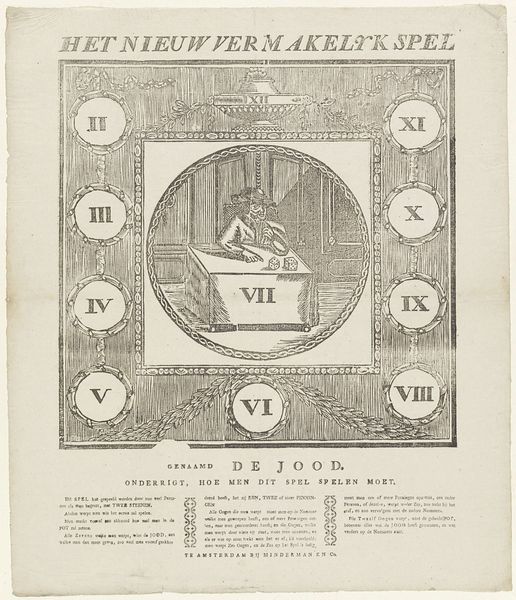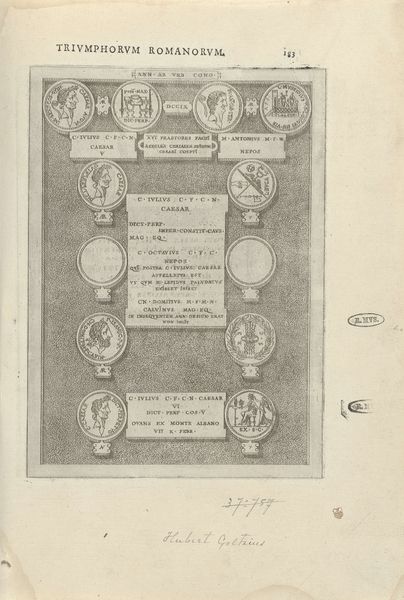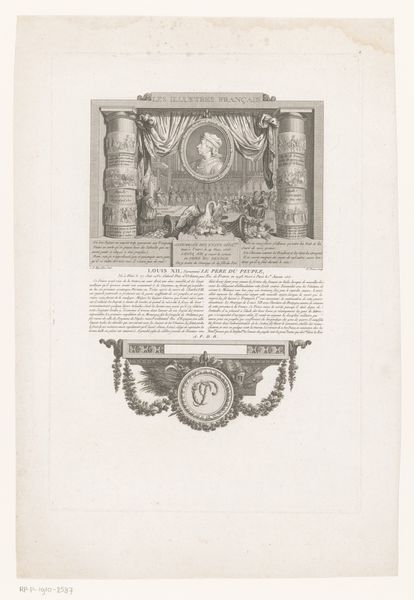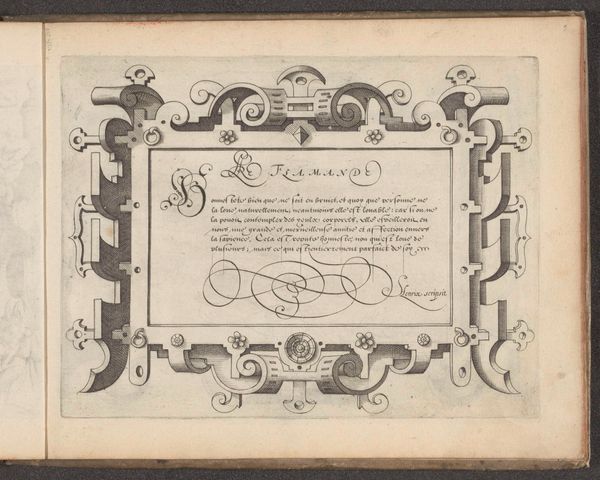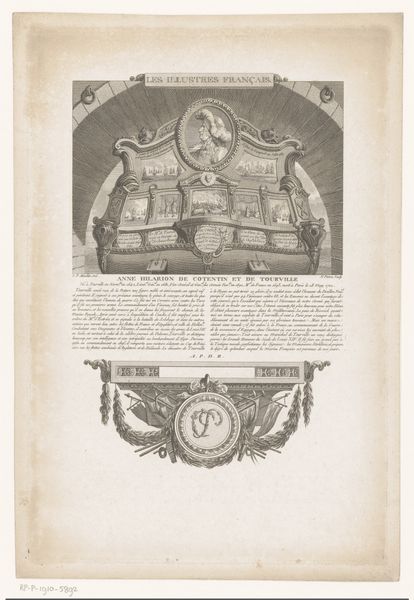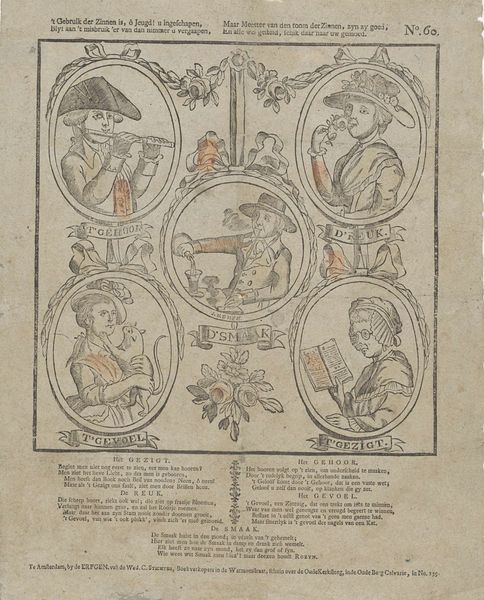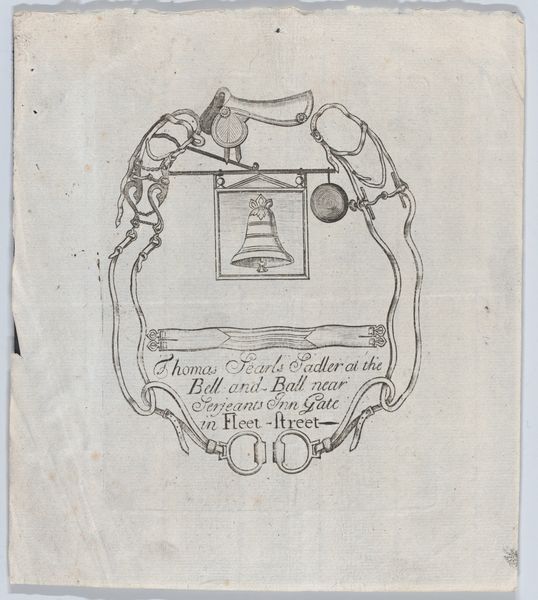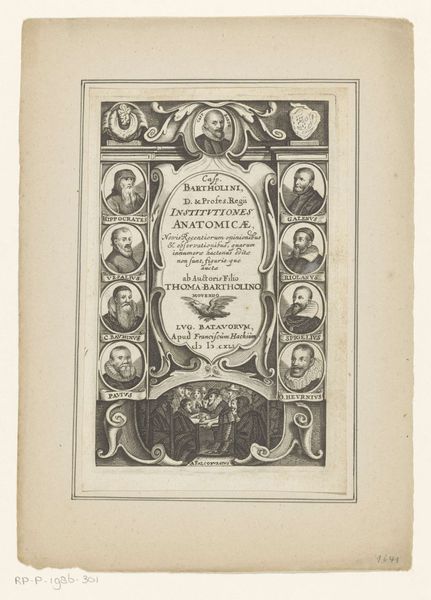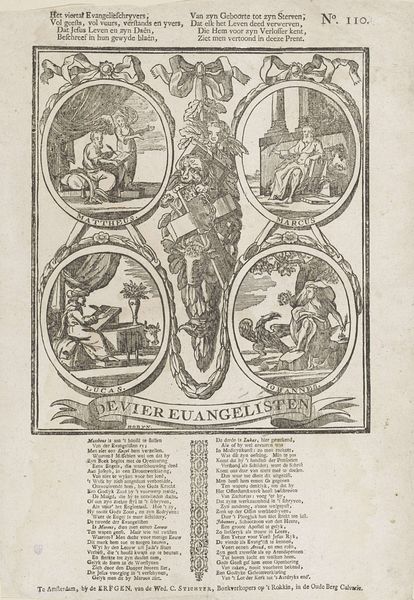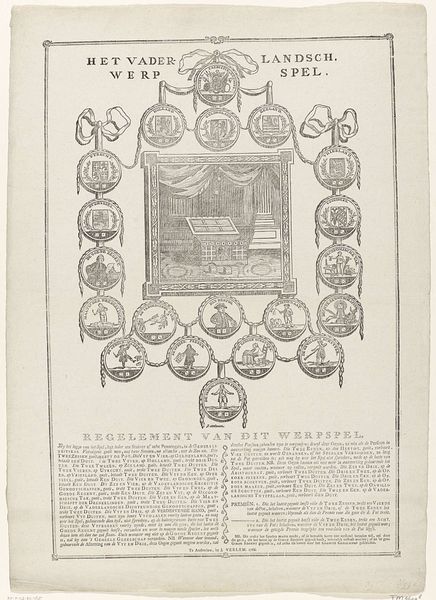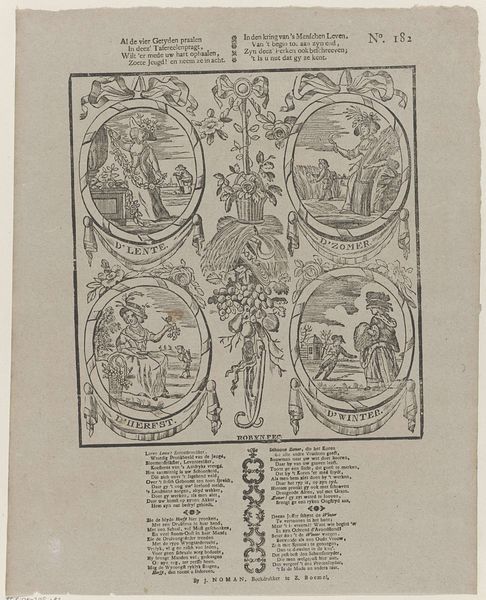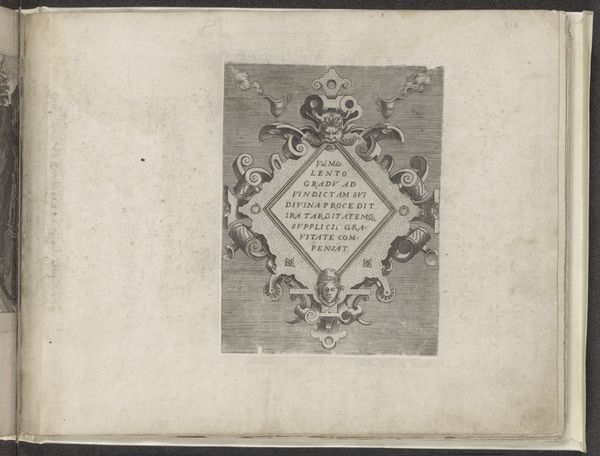
graphic-art, print, engraving
#
graphic-art
# print
#
old engraving style
#
genre-painting
#
history-painting
#
engraving
Dimensions: height 525 mm, width 440 mm
Copyright: Rijks Museum: Open Domain
Editor: This engraving from the early 1800s, titled "Bordspel genaamd 'De Jood'," which translates to "Board game called 'The Jew'," by Jan (Sr.) Oortman is striking. It feels rather satirical, almost like a caricature with this figure isolated in a circle at the center. How do you interpret this work in its historical context? Curator: Well, immediately, that title and central image give me pause. It points to a deeply ingrained, and openly displayed, antisemitism within 18th and early 19th century European culture. Considering this was printed during a period when Jewish communities were facing significant discrimination and social exclusion, it's important to analyze the role such imagery played in perpetuating those prejudices. How might the game itself have reinforced negative stereotypes, do you think? Editor: It seems to reduce a group to a symbol to play with… Were board games like this common? Was there an intention to “teach” through the game? Curator: Exactly, reducing an entire people to a caricature. Board games, prints and other visual media served as powerful tools for disseminating political and social commentary. In this case, the title suggests an intention, possibly playful, or even moralizing, that would need a close inspection of the full print's text to truly gauge intent. The print's full Dutch title, as well as surrounding text, implies a moralistic "lesson." Do you think knowing the artist was Oortman affects your interpretation at all? Editor: I hadn’t considered the artist’s name being attached affecting anything, but learning he did not publicly distance himself makes the work harder to engage with. It definitely colors the whole piece. I think it's important to remember the history, but to keep in mind the feelings that could cause contemporary viewers of different backgrounds. Curator: Indeed, it's a harsh reminder of the public nature of prejudice, and how art can reflect and, sadly, reinforce harmful societal attitudes. It’s valuable to understand this work not as a simple game, but as a cultural artifact revealing a disturbing aspect of the past. Editor: Definitely, this piece highlights the need to understand historical context and the role art plays in social discourse. Thanks for pointing out those historical details and cultural associations that might otherwise have been missed!
Comments
No comments
Be the first to comment and join the conversation on the ultimate creative platform.
